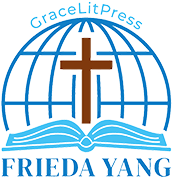
Childhood under the Cultural Revolution: A Personal Perspective
Table of Contents
The Cultural Revolution in China (1966–1976) is often portrayed as a decade of political upheaval, social chaos, and radical ideological battles. But behind the sweeping historical events were countless children whose daily lives, dreams, and sense of security were torn apart. Frieda Yang’s memoir, The East Is Red, offers a rare and intimate window into what it was like to grow up as a child amid this storm. Her story is a powerful reminder that history is not just about politics — it’s about the real people, especially the young, whose lives are forever changed.
When Childhood Meets Revolution
Frieda was only eight years old when the Cultural Revolution’s forces invaded her classroom and home. One unforgettable scene in her memoir recalls the arrival of the Little Red Guards — schoolchildren, barely older than herself — wielding scissors and red armbands emblazoned with political slogans. Their mission was to “cleanse” society of “decadent Western influences.” Curly hair and Western-style pants were suddenly deemed enemies. Frieda witnessed classmates being publicly humiliated, their hairstyles forcibly cut. What should have been a safe space of learning became a battleground for ideology.
The confusion and fear Frieda felt are palpable throughout the memoir. As a child, she did not fully grasp the political jargon, but she understood the threat. She learned early that innocence could be punished. The classroom, the home, even playtime was shadowed by the revolution’s demands. Her story vividly captures this clash between the innocence of childhood and the harsh realities of political fanaticism.
The Family under Siege
The political storm didn’t stop at the school doors. Frieda’s family was deeply affected by the Cultural Revolution’s chaos. Her father, a distinguished chemical engineer who had studied abroad, had been forced to leave China for Hong Kong years before, leaving the family vulnerable. Frieda’s mother struggled emotionally and mentally under the pressure of persecution and separation, culminating in her hospitalization and electroshock treatments. The trauma of family separation is one of the memoir’s most heart-wrenching themes.
One of the most gripping moments Frieda recalls is the raid on their home by the Red Guards — young revolutionaries armed with iron bars and political fervor. From a child’s viewpoint, the scene is terrifying: doors being battered down, prized possessions smashed, and the family’s private sanctuary transformed into a site of fear and violation. Classical music records, books in foreign languages, and photographs—all symbols of the family’s identity—were destroyed as “decadent” influences.
For Frieda, this was not just the loss of material things but the erasure of a world she loved, a world that connected her to her father and to a cultural heritage under threat.
Dreams amid Destruction
Despite the terror and loss, The East Is Red reveals the resilience of a child’s spirit. Frieda’s recurring dream of flying symbolizes a longing for freedom and reunion, a powerful metaphor for hope amid despair. The dream acts as an emotional lifeline, something to hold onto as the political world around her crumbled.
Music and art, too, became refuges. Frieda and her sisters sang, danced, and played the piano, small acts of normalcy and rebellion in a time of upheaval. These moments of beauty and creativity remind us that even in the darkest times, children find ways to dream and connect.
Navigating Loyalty and Danger
Frieda’s family faced the dangerous balancing act of showing enough loyalty to the revolution to avoid persecution while privately preserving their own values and memories. Her older brother Leon, only a teenager, took on the role of protector and spokesperson, defending their father’s reputation and trying to shield their home from looting.
This dual existence—public compliance and private resistance—was a survival strategy for many families during the Cultural Revolution. Frieda’s memoir exposes how children were caught in this tension, forced to understand political realities far beyond their years.
Growing Up Too Fast
Through Frieda’s eyes, we see how children became unwilling participants and witnesses in one of history’s most intense political experiments. Her story is not just about lost childhood innocence but also about premature responsibility. With their mother hospitalized and father absent, Frieda and her siblings had to grow up quickly, managing their fears, caring for each other, and finding ways to endure.
Yet, even as they faced hunger, uncertainty, and loss, the children held onto their hopes and dreams. The memoir’s blend of childhood wonder and harsh reality creates a poignant tension that draws readers deeply into Frieda’s world.
The Lasting Impact
What makes Frieda Yang’s memoir especially compelling is how she connects her childhood experiences with the long shadow they cast over her adult life. The trauma of family separation, political suspicion, and loss is not confined to history books but lived and remembered.
Her story challenges us to see the Cultural Revolution not just as a political event but as a human tragedy with deep emotional consequences. It reminds us that behind every historical movement are individual lives—especially children—shaped and sometimes broken by forces beyond their control.
Why This Perspective Matters Now
Reading The East Is Red today offers more than historical insight. It broadens our understanding of how political upheaval affects the most vulnerable, especially children. In a world where conflicts continue to disrupt families, Frieda’s memoir resonates with universal themes of resilience, hope, and the enduring power of family.
Her story invites empathy and reflection. It reminds us to listen to the voices of children caught in crisis, whose stories are often overshadowed by the grand narratives of history. These personal perspectives deepen our appreciation of history’s complexity and the cost of political turmoil.
Final Thoughts
The East Is Red is a compelling memoir that transforms a decade of political chaos into a deeply personal story of childhood, family, and survival. Frieda Yang’s vivid recollections pull readers into a world where innocence is challenged, but hope and love endure.
For anyone wanting to understand the Cultural Revolution from the ground up, this memoir offers an unforgettable view—through the eyes of a child who lived it. It is a tribute to the resilience of children everywhere who face impossible circumstances and a testament to the power of memory to keep their stories alive.
Frieda’s journey is a call to remember the children behind history’s headlines. Their dreams, struggles, and courage deserve to be heard and honored.


